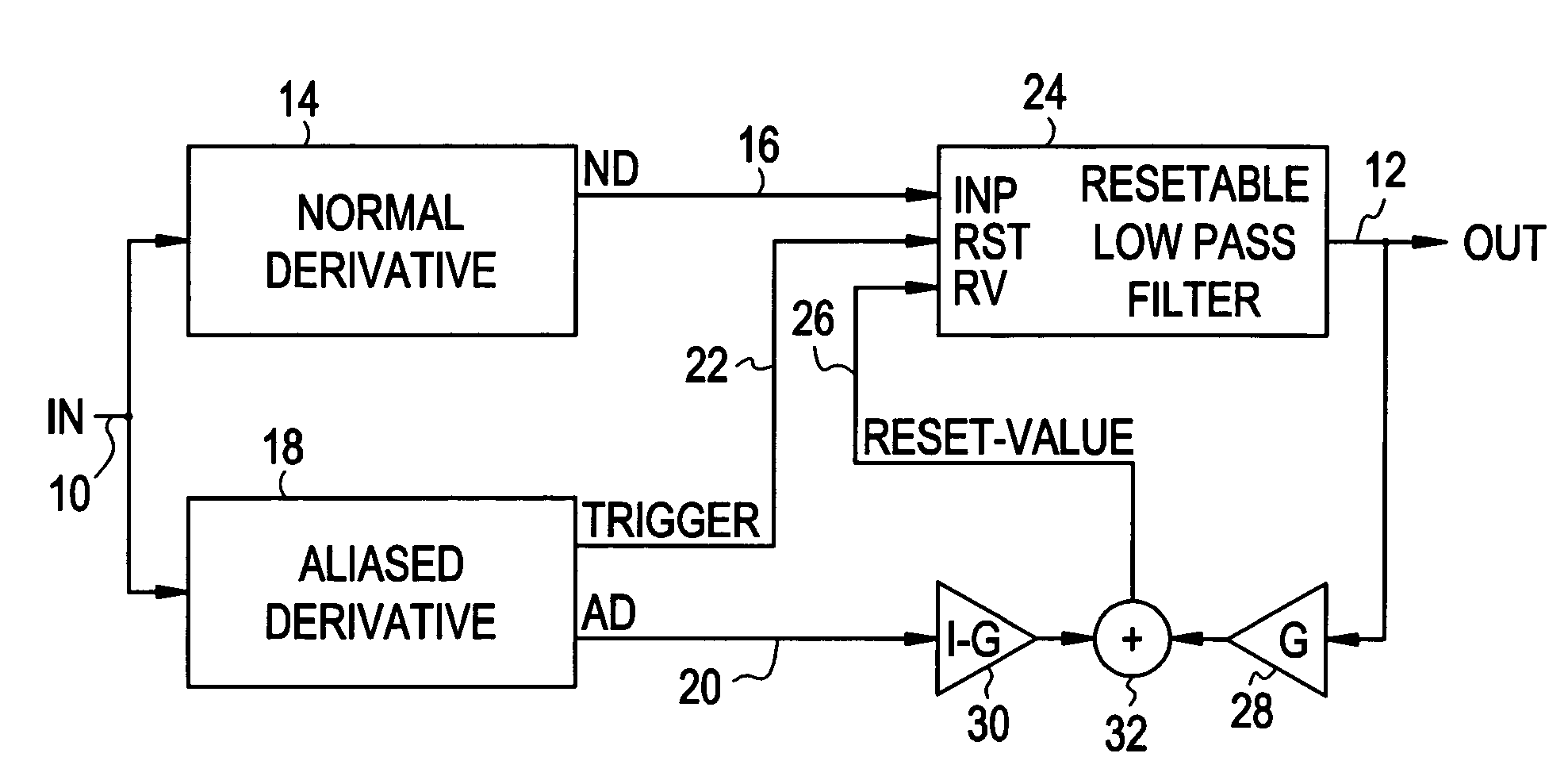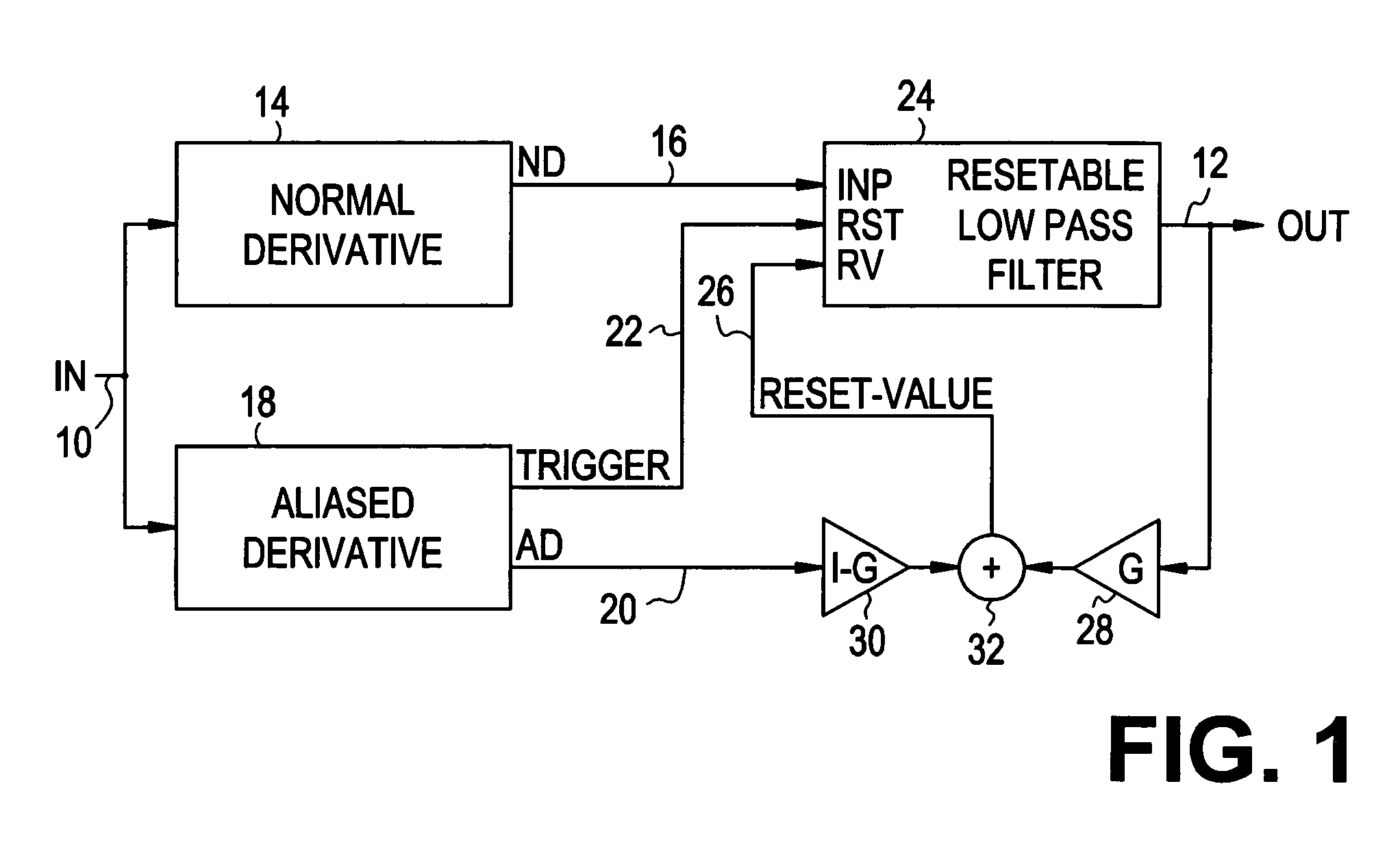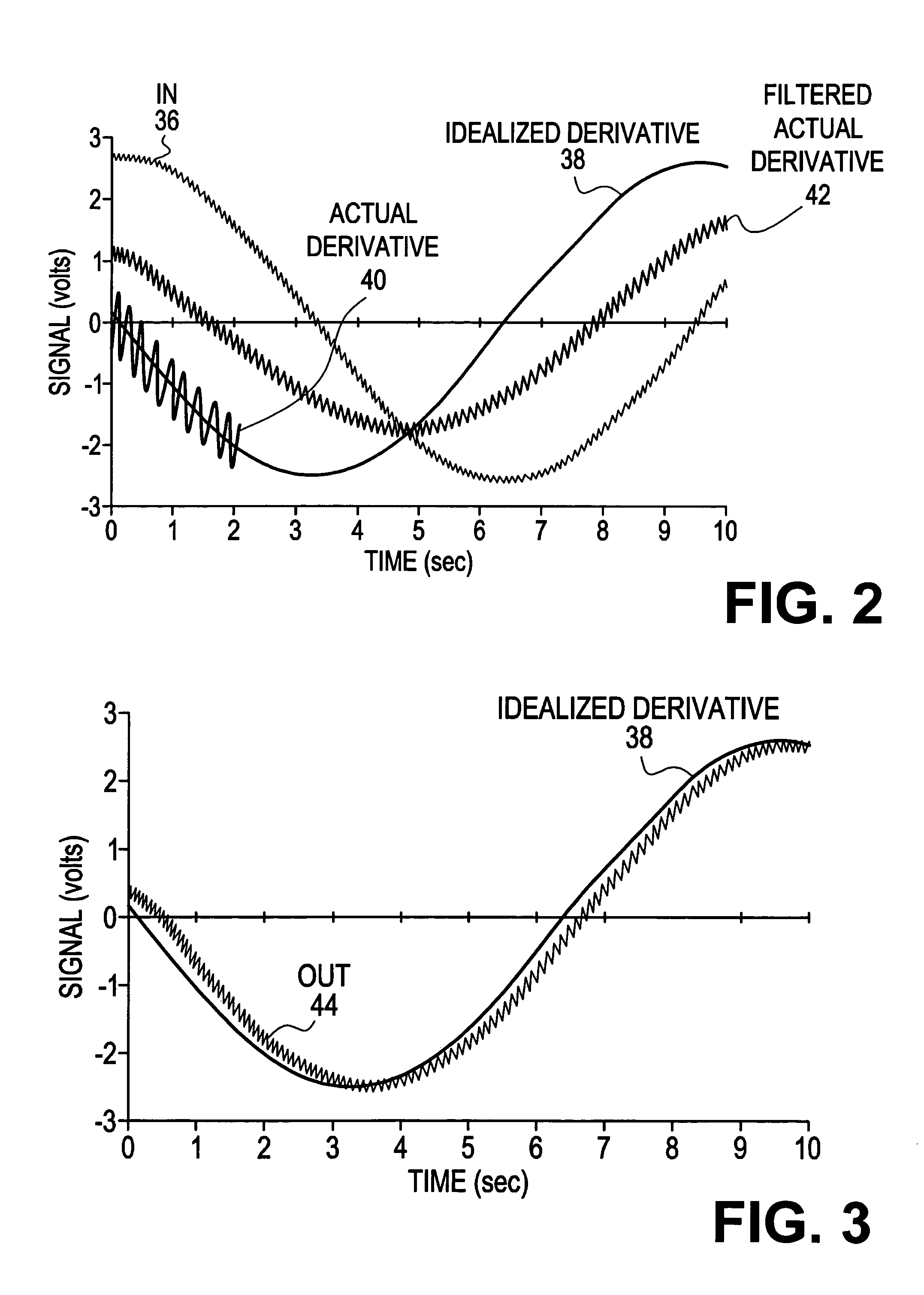Method of determining the derivative of an input signal
a technology of input signal and derivative, applied in the field of determining the derivative of input signal, can solve problems such as problematic conventional derivative calculations, and achieve the effect of eliminating phase delay
- Summary
- Abstract
- Description
- Claims
- Application Information
AI Technical Summary
Benefits of technology
Problems solved by technology
Method used
Image
Examples
Embodiment Construction
[0007]While the method of the present invention may be applied to any type of digital or analog input signal, it is disclosed herein in the context of an application involving a speed transducer and a rotary shaft such as a transmission input or output shaft. In a typical implementation, the speed transducer is positioned in proximity to the periphery of a toothed wheel fixed to the shaft and generates an electrical pulse with the passage of each tooth of the wheel. The pulses are fed to a circuit that produces a digital signal with logic level transitions corresponding to leading and / or trailing edges of the pulses, and the value of a free-running counter is sampled at specified transitions (i.e., zero-to-one, or one-to-zero) of the digital signal. Successive counter samples are differenced to form a succession of time intervals that are inversely proportional to the rotary speed of the shaft. In a dynamic system, the succession of time intervals defines a digital input signal that...
PUM
 Login to View More
Login to View More Abstract
Description
Claims
Application Information
 Login to View More
Login to View More - R&D
- Intellectual Property
- Life Sciences
- Materials
- Tech Scout
- Unparalleled Data Quality
- Higher Quality Content
- 60% Fewer Hallucinations
Browse by: Latest US Patents, China's latest patents, Technical Efficacy Thesaurus, Application Domain, Technology Topic, Popular Technical Reports.
© 2025 PatSnap. All rights reserved.Legal|Privacy policy|Modern Slavery Act Transparency Statement|Sitemap|About US| Contact US: help@patsnap.com



